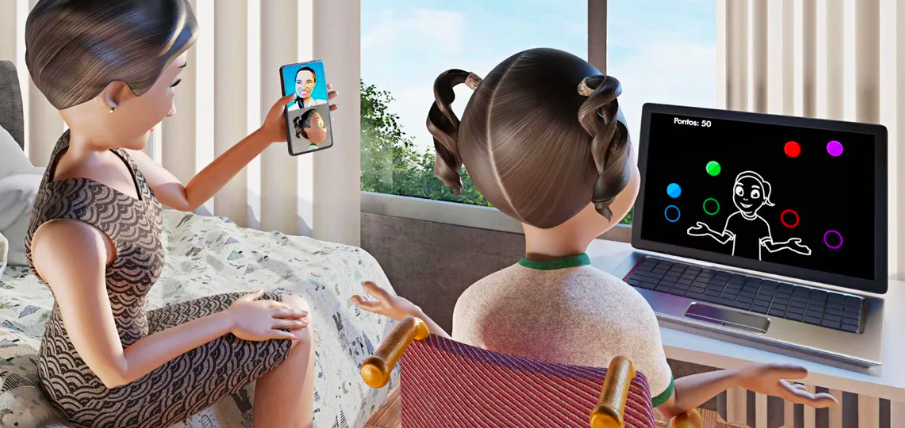In a study published in the scientific journal Frontier in Psychology, researchers demonstrated the benefits of using telerehabilitation as a treatment option.
ADVERTISING
The idea of carrying out the study arose during the period of social isolation, during the coronavirus pandemic. Covid-19, when services could not take place in person and, therefore, many patients had to interrupt their therapies. Before the pandemic, researchers were already using virtual reality to support these services, but all in person. Given the difficulties imposed by quarantine, the group decided to adapt the therapy and test its effects through virtual care.
O metaverse It is a kind of “new reality”, a space that integrates the worlds – real and virtual through digital devices – cell phones, tablets or computers. It is a collective and shared space, in which it is possible to identify – through an avatar – buildings, rooms, furniture, in addition to meeting other people and talking to them in a similar way to if they were in the real world. In this virtual reality environment it is also possible to socialize, play, learn and collaborate.
The group is coordinated by professor Carlos Monteiro, from the Physical Education and Health course at the University of São Paulo, who had the idea of adapting the method and platform to be applied in patients' homes, without the presence of a healthcare professional. (who followed therapy remotely). To do this, you only needed to have a computer, tablet or cell phone and access to a good internet connection.
ADVERTISING
“You don’t need 3D glasses or a computer, access can be done on your cell phone. This is a way to reduce costs and make the platform available to patients in any region of Brazil, free of charge”, explained Monteiro, who also coordinates the page @metaverso.rehab, where he talks about various research being carried out on the topic. .
According to Monteiro, the group develops several games for rehabilitation and they can be adapted according to the person's disability. In this study, they specifically evaluated the effects on patients with cerebral palsy, but the model can be applied to people with Autism Spectrum Disorder (ASD) and Down syndrome, for example.
How does it work?
As virtual reality was already used in face-to-face care, the professor wanted to know whether playing games via remote care during the pandemic would increase the level of physical activity of these patients, who were at home. In total, 44 people participated in the study, which was carried out between March and June 2020.
ADVERTISING
According to Monteiro, a researcher guided the patients' activities remotely. At home, with the help of a guardian, participants played the games through the non-immersive platform and their activity levels were detected and evaluated by the platform.
Patients with cerebral palsy may have some motor disorders associated with sensations, learning and communication. In one of the games, for example, the participant entered the metaverse and their avatar needed to “touch” balls as they appeared on the computer display. This “touch” was done through the movements of the patient’s hands and everything was detected and recorded by the computer/cell phone camera.
O The objective of the therapy, explained Monteiro, was to evaluate patients' perception of effort, tiredness and motor coordination through the platform and a questionary that uses a scale based on the sensations felt during exercise, such as muscle fatigue and increased heart and respiratory rate. The professor also said that the improvement (or not) of motor performance was also analyzed, which was measured by the precision of movements and the number of correct answers and errors. Lastly, the researcher assessed participants' motivation and satisfaction.
ADVERTISING
Access virtual reality game for free here
The results demonstrated that the remote therapy using virtual reality helped to engage and improve the performance of these patients, in addition to encouraging the practice of physical activity. Patients also found the activity fun. The advantage of this method, says Monteiro, is that it does not use the immersive metaverse (with 3D glasses, which cost much more). “This facilitates and expands the possibility of access to new technologies across the country at an affordable cost,” he said.
The limiting factor, he says, is the lack of investment in the area to improve the quality of patient access to electronic devices. “A pair of virtual reality glasses costs around R$3.000. There would be no way to offer this to all patients. But our platform is open and today we have five games available to anyone”, said the professor.
(Source Einstein Agency)
Read also





